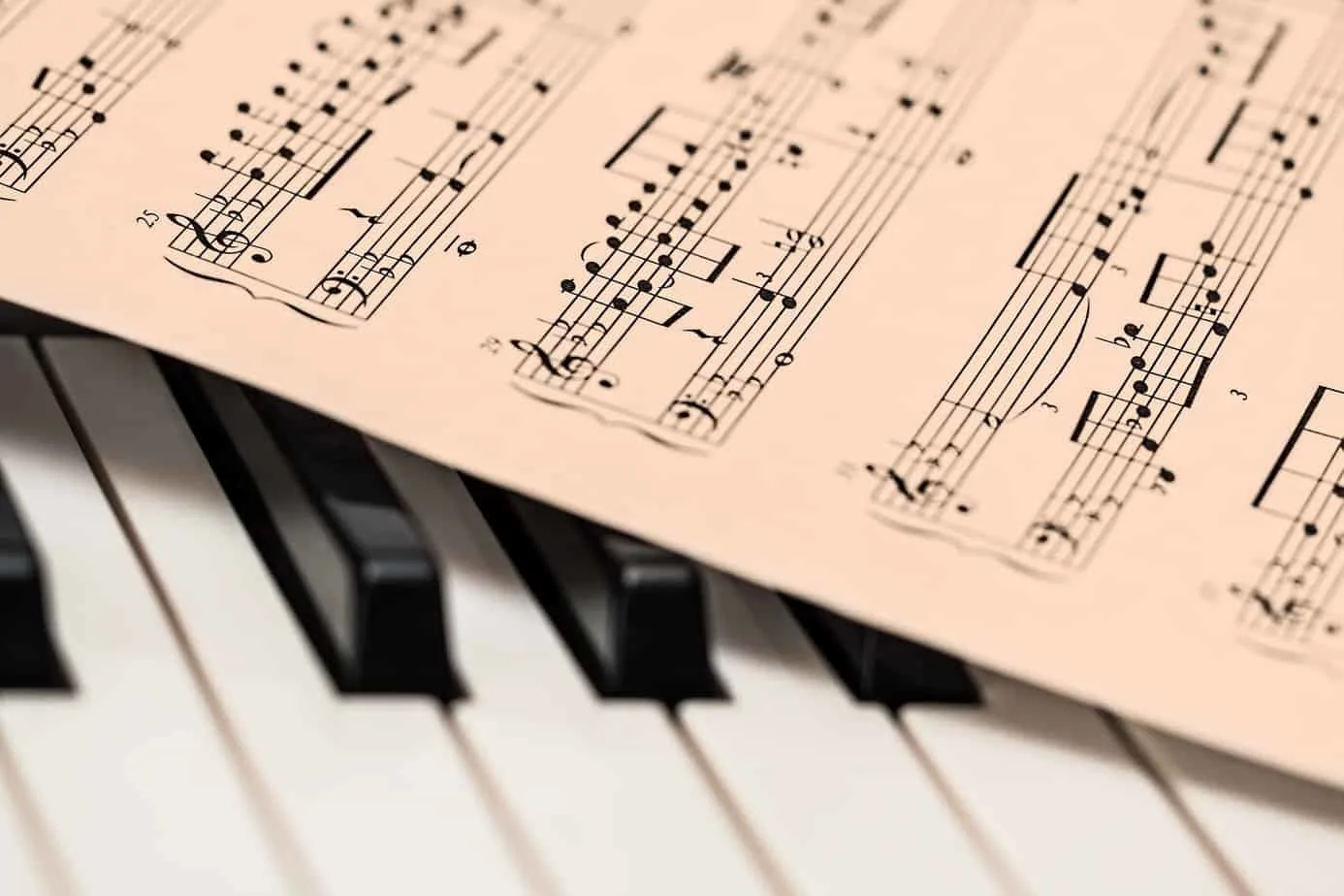Solfege is a unique practice for vocalists that can improve every aspect of your singing if done regularly. It involves singing each note in a scale using a different syllable and can be practiced in many different ways.
Solfege exercises can be tailored to suit your singing style and your aims. One of the most effective solfege exercises for beginners is to sing the major scale, assigning a syllable to each note, then moving the scale up a tone while keeping the same syllables in the same position in the scale.
Vocal exercises should be performed regularly by any singer that wants to see improvements in their range, tone, and technique. Solfege is a tried and tested practice that singers of all styles can use to improve.
In this article, I’ll provide some solfege exercises suitable for beginners and experienced vocalists so that you can implement them into your singing practice routine.
Exercise 1 – Major Pentatonic
The first solfege exercise you can try involves using the following syllables:
- Do (doh)
- Re
- Mi
- Sol
- La
If you’re not familiar with the pentatonic scale, don’t worry. It’s simply the scale you will have used many times before to sing your favorite songs, as it is the most popular variety in Western styles of music.
Developing the ability to sing in a pentatonic scale is vital both for your general singing ability and your solfege practices.
To start this exercise, begin by finding a key that is comfortable for you to sing in. Simply sing a note that is somewhere in the middle of your range, requiring little effort.
Then, using an instrument or a note generator online, find the note that is closest to the one you sang. This will be the root note of the pentatonic scale that you will be singing.
The pentatonic scale consists of the root note, the 2nd, 3rd, 5th, and 6th. For example, in C major pentatonic, the notes would be C, D, E, G, and A.
Once you’ve chosen a comfortable key to sing in, use the syllables listed above to sing each note in an ascending pattern, then repeat the scale once you reach the final note.
This exercise will not only help you develop the ear for the pentatonic scale, but it will also help you to become familiar with some of the sounds used in solfege.
Exercise 2 – Minor Pentatonic
The second exercise that you can try is almost identical to the first. However, rather than singing the syllables in a major pentation scale, we’re going to switch it over to a minor pentatonic.
Minor pentatonic scales have five notes: the 1st, 3rd, 4th, 5th, and 6th. The scale has a melancholier sound compared to the aforementioned major pentatonic.
The reason that it’s important also to practice solfege in a minor pentatonic scale is that it will help to develop your musical ear further and prevent you from getting overly familiar with the sound of the major pentatonic scale.
Use the exact same process to choose the root note, then sing the syllables of the solfege using the notes in the minor pentatonic scale. If you choose A minor, for example, you would sing A, C, D, E, and G.
Exercise 3 – “Do Re Mi”
“Do Re Mi” is perhaps the best-known solfege exercise, and it’s an excellent place to get started if you’ve never attempted this type of vocal practice before. It was made popular by the classic musical, The Sound of Music.
This exercise begins with three ascending notes and then develops to include different notes and syllables.
The way the notes move in this exercise feels natural, and it shouldn’t take you too long to become familiar with the melody. You can use this video as a guide, but feel free to change the key so that the notes are comfortably within your range.
Although this exercise is straightforward, it can be used as part of your vocal warm-up routine once you’ve moved on to some of the more advanced solfege practices listed in this guide.

Exercise 4 – Major Scale
The next solfege exercise should be more straightforward if you have practiced the first major pentatonic exercise I recommended. Rather than using only five notes, you will sing the entire major scale, which consists of seven notes.
More notes require more syllables. We’re now going to sing all the solfege syllables in order: Do, Re, Mi, Fa, Sol, La, and Ti.
The difference between the major pentatonic and the major scale is that the latter includes what is known as the diatonic notes. In C major, you would now be singing C, D, E, F, G, A, and B.
This scale has a more classical sound than the major pentatonic scale, and it will help you practice transitioning through the notes while keeping the melody joyful and inspired.
Exercise 5 – Minor Scale
You probably guessed that we’d be covering the minor scale next. It’s important not to neglect the major or minor scales when practicing singing, mainly when using solfege exercises.
All major scales have what is known as their relative minor. The relative minor includes the exact same notes as the major scale, but the root note is moved to the 6th note of the major scale.
Knowing this is beneficial for solfege because you can find the major scale that is most comfortable for you to practice these exercises in, and then use the relative minor to practice a different scale without needing to transpose the notes.
The ability to sing in both major and minor keys is essential for improvisation, sight reading, and composing vocal melodies.
So, if you were singing the previous solfege exercise in C major, the relative minor would begin on the 6th note, which is A. That would mean the root of the minor scale would be A, followed by B, C, D, E, F, and G. By changing the root position, you’ll notice that the scale suddenly has a different, darker sound.
Exercise 6 – Solfege Remix
The exercises mentioned above will help you develop your musical ear and ability to sing the different scales. Once you feel confident, you can move on to this remix exercise, which gives you more freedom when using solfege exercises.
Start by writing down the notes in the major or minor scale you used in one of the previous exercises. For example, if you used G major, you would write down G, A, B, C, D, E, and F#.
Then, write each of the solfege syllables underneath the notes in order: Do, Re, Mi, Fa, Sol, La, and Ti.
Rather than simply singing the notes with the syllables, cover up three of them so that you are left with a series of four notes. The notes that you cover up can be anywhere on the scale.
Now, attempt to sing the new solfege pattern using the remaining four notes.
If you struggle to sing the intervals, use a piano or another pitch-generating tool to check which notes you should be singing.
You can then continue to repeat this exercise, changing the notes you cover up until you become quick at recognizing the different intervals and patterns between the notes.
The exercises will develop your ability to improvise on the spot and find the right notes based on your knowledge of intervals within a scale.

Exercise 7 – Chromatic Solfege
The final solfege exercise I recommend you try involves using the chromatic scale. If you’re unfamiliar with this scale, don’t worry, it’s straightforward to understand.
The chromatic scale includes every semitone within an octave. So, you are singing every note without missing any of them out.
If you start with the root note on C, you will sing every single note until you reach the next C on the piano. This would include C, C#, D, D#, E, F, F#, G, G#, A, A#, and B.
As there are only seven solfege syllables, you’ll need to start to repeat yourself when you reach the eighth note. You can write down the notes again and use a piano as a reference if you’re struggling at first.
This exercise will help you to break out of the confines of Western major and minor scales.
Related Questions
Should you warm up before solfege exercises?
It is advisable to warm up before performing solfege exercises, particularly the more complex ones. Lip rolls and breathing exercises should be done before any singing exercise.
How frequently should you practice solfege?
To get the best results from solfege exercises, it is recommended that you practice them at least twice a week, for fifteen to twenty minutes. If you can practice them more, you will see more progress over a shorter period.
